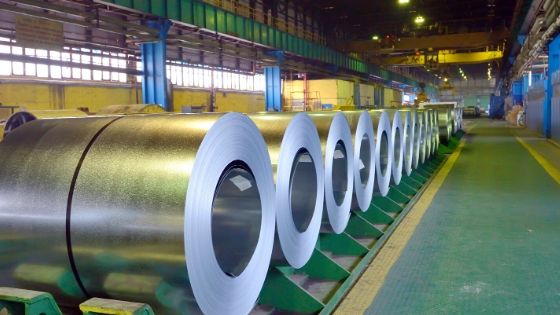Editor’s Note: Jeff Ferry is the chief economist for CPA.
Media commentators often criticize the Trump administration’s steel tariffs.
[Jeff Ferry | December 31, 2019 | Tribune Democrat]
But evidence from around the United States shows that the steel tariffs are working.
They are delivering jobs and an economic boost to many long-forgotten towns and cities throughout the country.
Billions of dollars in major steel investments are now underway. Many of them are in small towns and rural communities that have been depressed for years. The new investments and new jobs are boosting local wages in steel and other businesses. And real estate values are rising, too.
In Hickman, Arkansas, for example, America’s largest steelmaker, Nucor, just opened a new steel mill that will employ roughly 100 workers, and at an average annual salary of $80,000.
In neighboring Osceola, Arkansas, Big River Steel is investing $1.2 billion to expand a steel complex that will add 500 new jobs. And in Sedalia, Missouri, Nucor is building a $400 million steel facility that will employ 250 workers at an average annual salary of $65,000 – almost double the area’s average wage.
Higher wages – along with good benefits – are a trademark feature of the steel industry. They are especially valuable because many of these jobs are available to Americans lacking a college degree. Our study of major U.S. steel companies’ SEC filings found that they paid their employees an average of $94,000 a year.
The U.S. steel market has long been depressed, thanks to two decades of global steel oversupply from government-subsidized production in China. China now produces 56% of the world’s steel.
And on top of that, China also churns out almost 400 million tons a year of excess steel. That market overhang has led to globally lower steel prices and high levels of steel imports into the U.S. The United States has become the world’s largest steel importer – and is the only major industrial power that imports 20% of its steel. It’s an unsustainable situation, and the Trump administration has rightly taken action because steel is vital to national security. And, as noted above, steel jobs are a source of prosperity for many industrial areas.
According to U.S. Commerce Department data, steel import penetration today has declined to 21%, compared to 23% in 2018. Before that, import levels reached as high as 30%. It only takes a modest decline in imports to improve the profitability of the industry.
With a more secure outlook for profitability, the industry is now able to invest in more plants and more modern equipment. That creates jobs.
The tariffs are speeding the evolution of U.S. steelmaking into a world-class, state-of-the-art industry. Steelmakers, such as U.S. Steel and AK Steel, have eliminated some jobs.
But the cuts are being made to older, less-efficient plants.
U.S. Steel recently bought a large stake in Big River Steel, which uses a more modern, “mini-mill” technique of steelmaking. And AK Steel is being acquired by iron ore miner Cleveland-Cliffs. The tariffs provide stability that allows companies to make investments and to modernize the overall industry. More modern steel companies, such as Nucor and Steel Dynamics, pay higher wages than traditional steelmakers. So these technological improvements will benefit both workers and management.
Critics note that the tariffs haven’t changed China’s behavior. That’s true.
According to the World Steel Association, China’s steel production in 2018 rose another 6.6%, to 928 million tons. Keeping artificially subsidized Chinese steel out of the U.S. market is one thing.
But until the international community can impose some restraint on China’s authoritarian regime and its uncontrolled subsidies, there will be no long-term solution.
Meanwhile, the tariffs are working. They are creating good jobs and prosperity in regions of the United States that need it. And they’re helping to revive America’s steel industry as a blueprint for rebuilding the nation’s wider manufacturing sector.
Read the original article here.













